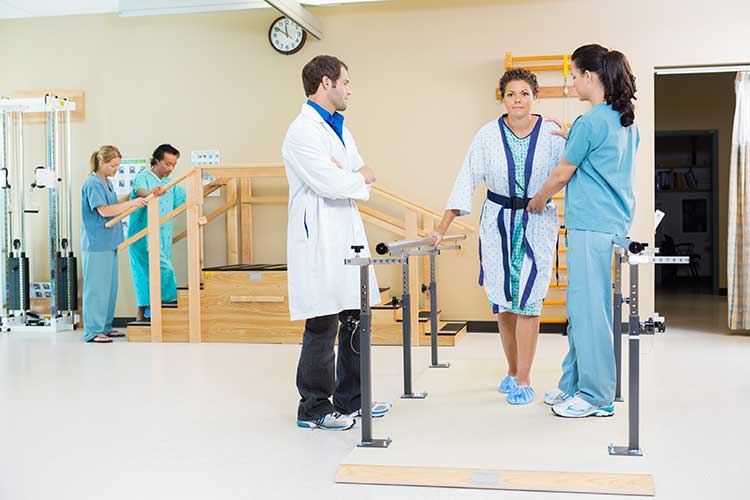Dive into our comprehensive guide to the physical therapy aide job description. Explore the essential roles, responsibilities, and skills needed to succeed in this dynamic healthcare support role.
The healthcare sector is brimming with career opportunities, and one integral but often understated role is that of a physical therapy aide. These professionals are pivotal in the day-to-day operations within physical therapy clinics and hospitals, providing the necessary support to therapists and patients.
Physical Therapy Aide Job Description: A Comprehensive Guide
This comprehensive guide delves deep into the job description of a physical therapy aide, outlining the duties, necessary skills, educational pathways, and the potential for growth in this compassionate career. If you’re considering a career in the healthcare field and are interested in physical therapy, read on to understand this vital position in depth.
Physical Therapy Aide Job Description: A Comprehensive Guide
Explore the full spectrum of a Physical Therapy Aide’s career. Understand job roles, responsibilities, and qualification criteria. Our comprehensive guide provides essential insights into the physical therapy aide job description.
Physical therapy aides work under the supervision of physical therapists and assistants to ensure that operations in a therapy setting run smoothly and efficiently. Their duties often revolve around non-clinical tasks but are essential to providing a conducive environment for healing and recovery. Their primary responsibilities include preparing treatment areas, cleaning equipment, and assisting with patient transfers and mobility.
Daily Duties and Work Environment
A typical day for a physical therapy aide can be varied and dynamic. Key responsibilities might include:
- Setting up therapy equipment and treatment spaces before sessions.
- Sanitizing therapy tools and equipment after use to maintain a hygienic environment.
- Assisting patients in maneuvering around the therapy area, which might involve helping them on and off therapy equipment or providing support as they walk.
- Clerical duties include updating patient records, scheduling appointments, and managing correspondence.
- Ensuring that the therapy space is organized and well-stocked with necessary supplies.
Physical therapy aides often work in hospitals, outpatient clinics, rehabilitation centers, and private practices. The environment is usually lively and interactive and focuses on empathetic patient care.
Skills and Attributes for Success
A successful physical therapy aide will possess a blend of interpersonal skills and physical stamina. Compassion, patience, and communication skills are paramount, as these aides continually interact with patients in pain or discomfort. Comfort with multi-tasking and an ability to follow detailed instructions is also critical, given the varied nature of their tasks and the clinical environment.
Physical demands are also part of the role, so being physically fit enough to assist with patient movements and spending much of the day on one’s feet is crucial.
Educational Pathway
Though formal education beyond high school is only sometimes a strict requirement, completing a program at a physical therapy aide school can significantly boost one’s prospects and preparedness for the role. These programs typically cover topics like anatomy, medical terminology, and the foundations of patient care.
Additional issues like ethics, privacy regulations, and office administration prepare students to handle the clerical aspects of the job. Completing a program demonstrates a commitment to the field and can provide a competitive edge when seeking employment. Most programs range from a few months to a year and often include a hands-on externship to provide real-world experience.
Certification and Continuing Education
While certification is not mandatory, some employers may prefer or require it. The American Physical Therapy Association (APTA) and other institutions offer resources for those looking to further their education in the physical therapy field. Voluntary certification can also lead to higher pay and better job opportunities.
Many physical therapy aides who want to advance choose to continue their education to become physical therapist assistants or even licensed physical therapists. Such career progression, however, requires more advanced education, including state licensure for physical therapists.
Understanding the Patient Experience
A major part of being a physical therapy aide involves understanding and facilitating a positive patient experience. Aides need to be attentive to the needs of patients, which can range from providing comfort measures to explaining therapy procedures and schedules. Sensitivity to patients’ physical and emotional states is key to creating a supportive environment conducive to their recovery.
Collaborating with Therapy Professionals
While physical therapy aides do not perform clinical functions, they require seamless collaboration with physical therapists and assistants. Aides need to understand therapy plans to prepare and maintain therapy areas effectively, and they must respond quickly to the needs and instructions of the therapy professionals to keep the clinic running smoothly.
Job Prospects and Market Outlook
The demand for physical therapy services is expected to grow due to an aging population and a higher incidence of chronic conditions that require rehabilitative care. As a result, the need for physical therapy aides is also projected to increase. The U.S. Bureau of Labor Statistics predicts faster-than-average job growth for physical therapy aides over the next decade.
Salary expectations for physical therapy aides can vary based on location, level of education, certification, and experience in the field. On average, physical therapy aides can expect entry-level positions to provide hourly wages, with the potential for increases as they gain experience or additional qualifications.
Physical Therapy Aide vs. Physical Therapy Assistant
A physical therapy aide (PTA) is a licensed professional who works under the direction of a physical therapist. The PTA assists the physical therapist in treating patients with physical therapy, which includes exercise, massage, and heat therapies. PTAs are involved in all aspects of patient care, such as preparing equipment and assisting with treatments and post-operative care instructions.
They may also assist with providing education on home exercise programs or other topics patients request. A Physical Therapy Assistant (PTA) typically completes an accredited program at a vocational school after graduating from high school and passes several exams to become certified as an aide or associate aide within their state board’s requirements.
Conclusion: Is This the Career for You?
The role of a physical therapy aide is both challenging and rewarding. While it necessitates a blend of physical endurance and soft skills, it offers a unique opportunity to contribute meaningfully to patient care and recovery. Becoming a physical therapy aide could be a fulfilling career path for those who thrive in dynamic, patient-focused environments and seek satisfaction in assisting others.
Becoming a physical therapy aide typically involves completing relevant education, such as attending a physical therapy aide school, and potentially gaining certification, depending on employer preferences. The knowledge and skills acquired through this pathway prepare you for the job and lay the foundation for future advancement should you decide to pursue further education in physical therapy.




